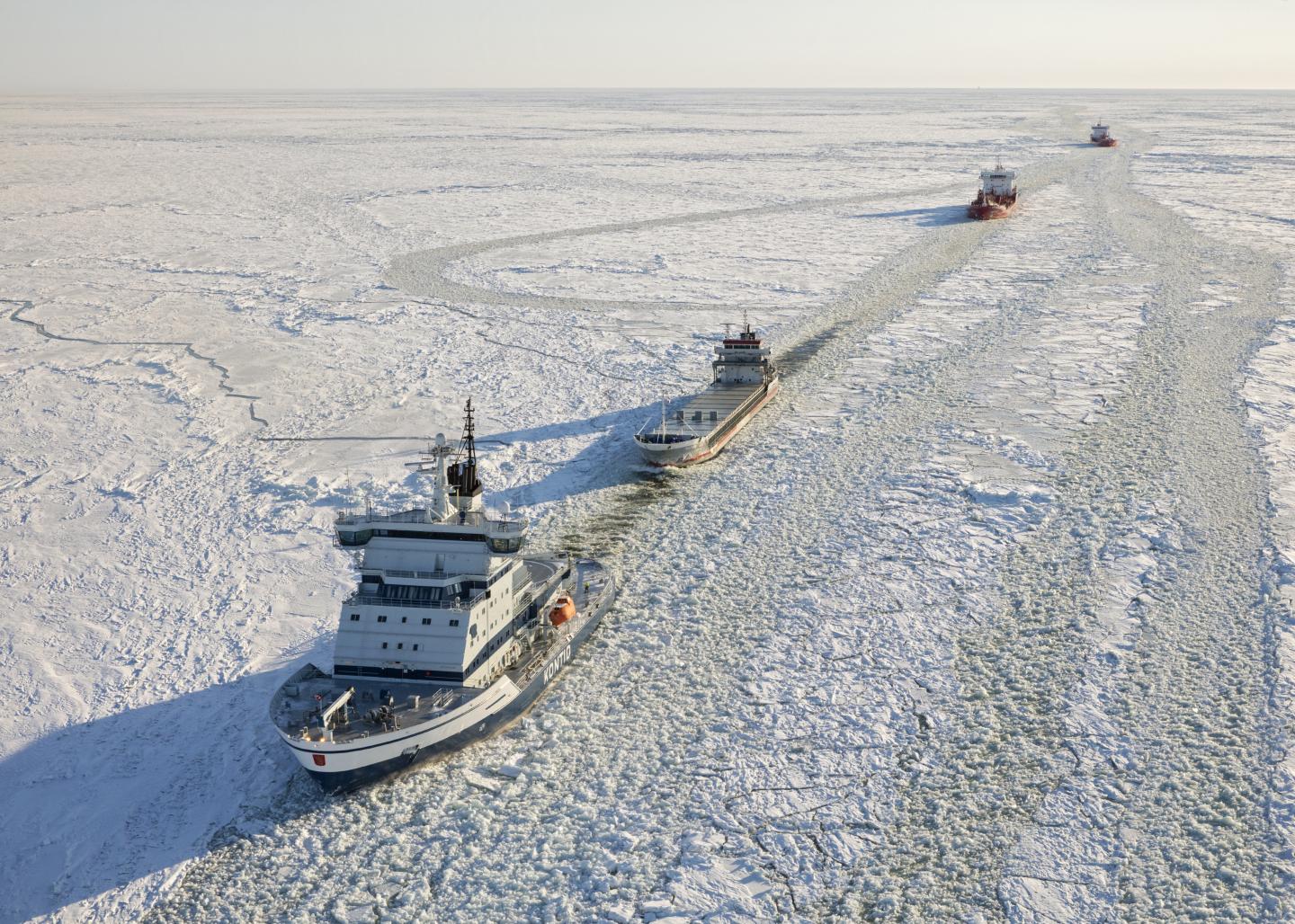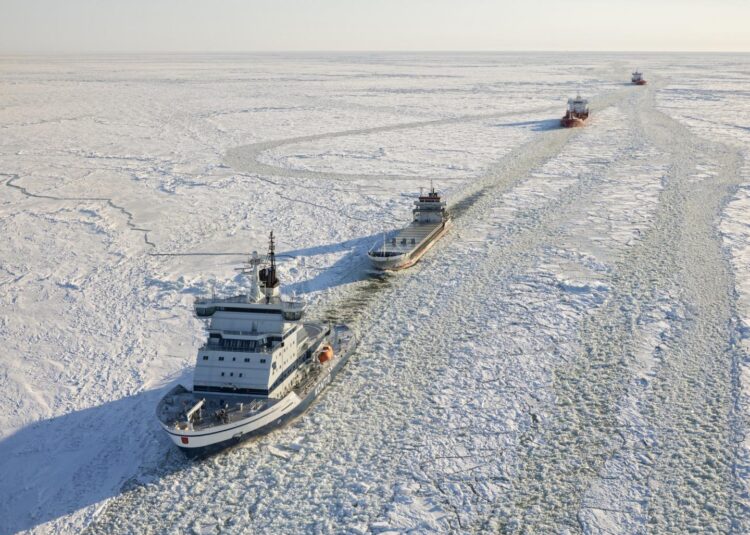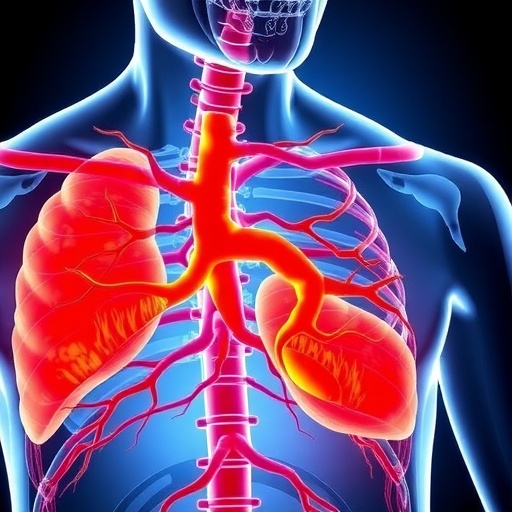
Credit: Photo: Arctia Ltd
Statisticians have calculated the probability of ships of different Polar Ship Categories becoming beset in ice along the Northern Sea Route. Their data will help assess the risks of maritime traffic in the Arctic.
The results of the new study, published recently in the Cold Regions Science and Technology journal, will support safer maritime transport planning and the prevention of oil spills. The results will also benefit authorities that regulate maritime traffic by providing a foundation for statutes and legislation. A comprehensive approach to computing helps shipping companies plan transport routes.
Tankers more common on the Northern Sea Route
The Northern Sea Route is attracting more tankers and cargo ships travelling from Russia and Asia to Europe, and traffic is expected to increase along the route in tandem with global warming (Figure 1).
In the winter, the sea is frozen over, making it inaccessible to ships of a lower Polar Ship Category without the assistance of an icebreaker. Ships can also become beset in ice in the spring and summer, leading to transport delays. At its worst, ice may force a vessel off its course so that it runs aground, with disastrous consequences.
“This is the first time a comprehensive risk assessment of a besetting event was performed using open data only,” says Assistant Professor of Statistics Jarno Vanhatalo, head of the Environmental and Ecological Statistics group and director of the Master’s Programme in Life Science Informatics at the University of Helsinki.
The researchers used satellite data on ice conditions in Arctic marine areas as well as open data sources on shipping.
“One of the biggest tasks required the merger of open datasets so that analyses could be conducted. This task was performed by Aalto University. The statistical analyses were carried out at the University of Helsinki, using a traditional generalised linear model, to which a Bayesian approach was applied,” Vanhatalo explains.
Ice conditions on northern maritime routes
“If we know the ice conditions prevailing in a specific area, which can usually be ascertained from satellite images, we can make a prediction for, say, today and for each point along the Northern Sea Route,” states Vanhatalo. The prediction indicates the probability of a ship of a particular type becoming beset in ice in a particular area (Figure 2).
The Polar Ship Category of a ship has a crucial impact on the probability of besetting. Ships of a lower category are most at risk, and many of them become beset in ice each year.
The researchers also analysed the effect of ice concentration on the probability of besetting. Ice concentration indicates the share of the sea covered by ice. In the winter, ice concentration is 100%, whereas in the spring and summer it varies from 0% to 100%, which means that the marine area is a mosaic of ice floes and open water.
The probability of a ship becoming beset in ice increases the longer the distance it travels in ice-covered waters and also increases significantly with higher ice concentrations. There are also considerable differences between ships of different Polar Ship Categories. For the best vessels, i.e., Category A ships, the probability of besetting on a journey of 3,000 nautical miles (NM) in 90%-100% ice concentration is just 0.04. Correspondingly, the probability for Category B ships is 7.5 times higher, or 0.3, whereas the probability for Category C ships is 22.5 times higher, or 0.9.
The newly published study is part of an international long-term research project funded by the Lloyd’s Register Foundation and aimed at improving maritime safety. Launched in 2003, the project will conclude at the end of 2021. Participants in the CEARCTIC and CEPOLAR projects, headed by Aalto University, include not only the University of Helsinki, but also the Norwegian University of Science and Technology (NTNU), the Memorial University of Newfoundland in Canada, and the Hamburg University of Technology in Germany.
The University of Helsinki researchers have been responsible for assessing the impact of a potential oil spill on the Arctic environment and biotic communities. Previous publications have focused on species of organisms in the Kara Sea and the effects of an oil spill in the area. [link: https:/
Although the research project is coming to a close, before the end of this year it will publish more statistical analyses of uncertainties associated with the modelling.
“Due to the limited measurement data available from Arctic marine areas, there are major uncertainties concerning shipping, living organisms and the behaviour of oil. Another major uncertainty relates to the natural stochasticity of highly unstable environmental conditions,” Vanhatalo adds.
Another article currently being written explores the relative significances of factors affecting the overall risk as well as how risk analyses should be carried out and how the conclusions drawn differ depending on what is examined. Does the examination focus solely on the accident risk of vessels or also on the risk they pose to marine biotic communities? The results depend on whether both are examined separately or at the same time.
Other upcoming publications include summarising reports on the project as a whole and recommendations based on the research conducted.
###
Reference:
Probability of a ship becoming beset in ice along the Northern Sea Route – A Bayesian analysis of real-life data. Jarno Vanhatalo, Juri Huuhtanen, Martin Bergström, Inari Helle, Jussi Mäkinen, Pentti Kujala
https:/
Cold regions science and technology, Volume 184, April 2021, 103238
Further information:
https:/
https:/
Assistant Professor Jarno Vanhatalo, University of Helsinki
Email: [email protected]
Phone: +358 503175494
https:/
Media Contact
Riitta-Leena Inki
[email protected]
Original Source
https:/
Related Journal Article
http://dx.





